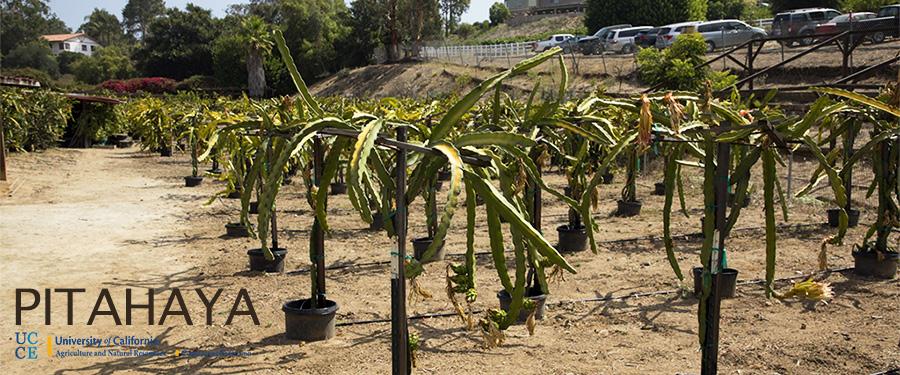2018 Pitahaya Festival and Field Day - Featured Story
Pitahaya/Dragon Fruit Production In San Diego

Pitahaya Production How To's (8 Video)
1. Introduction to Pitahaya Production How To Videos
2. How To Prune Pitahaya: Production
3. How To Prune Pitahaya: Sanitation
4. How to Prune Pitahaya: Trellis Training
5. How to Propagate Pitahaya
6. How to Plant Pitahaya Cuttings
7. How to Hand-Pollinate Pitahaya
8. How to Harvest Pitahaya
Pitahaya Video
Featured Story
It’s that time of year again as UCCE Small Farms & Agricultural Economics Advisor, Ramiro Lobo prepares for the 11thAnnual Pitahaya/Dragon Fruit Festival and Seminar. This two-day event will be held at the San Diego Farm Bureau on August 24 followed by the festival/field day on August 25 at the UC South Coast Research and Extension Center, in Irvine.
Attendants will benefit by gaining an overview of the establishment costs and economic prospects available to those who are looking to diversify their crops in San Diego’s agricultural industry.
Why Pitahaya? Well as water resources become more scarce farmers are looking for ways to rise above the economic impact of water use and Pitahaya is a great alternative. Pitahaya is water efficient and quite adaptable.
Also, the demand for healthy and exotic fruits is growing. Currently there are several species and up to 70 different clones that can grow in Southern California.
One of the major advantages of Pitahaya is that it’s fairly easy to propagate. Root cuttings may produce fruit in as little as one year; however, there are also disadvantages. With the cost of pruning, trellis systems, pollination and natural pests the cost of establishing this crop can be high and risky.
Overall Pitahaya has great potential. As a specialty crop it may add significant value to your other crops if the yield and fruit quality are sustained.
For more on this subject watch the Pitahaya Production videos on this web page.

